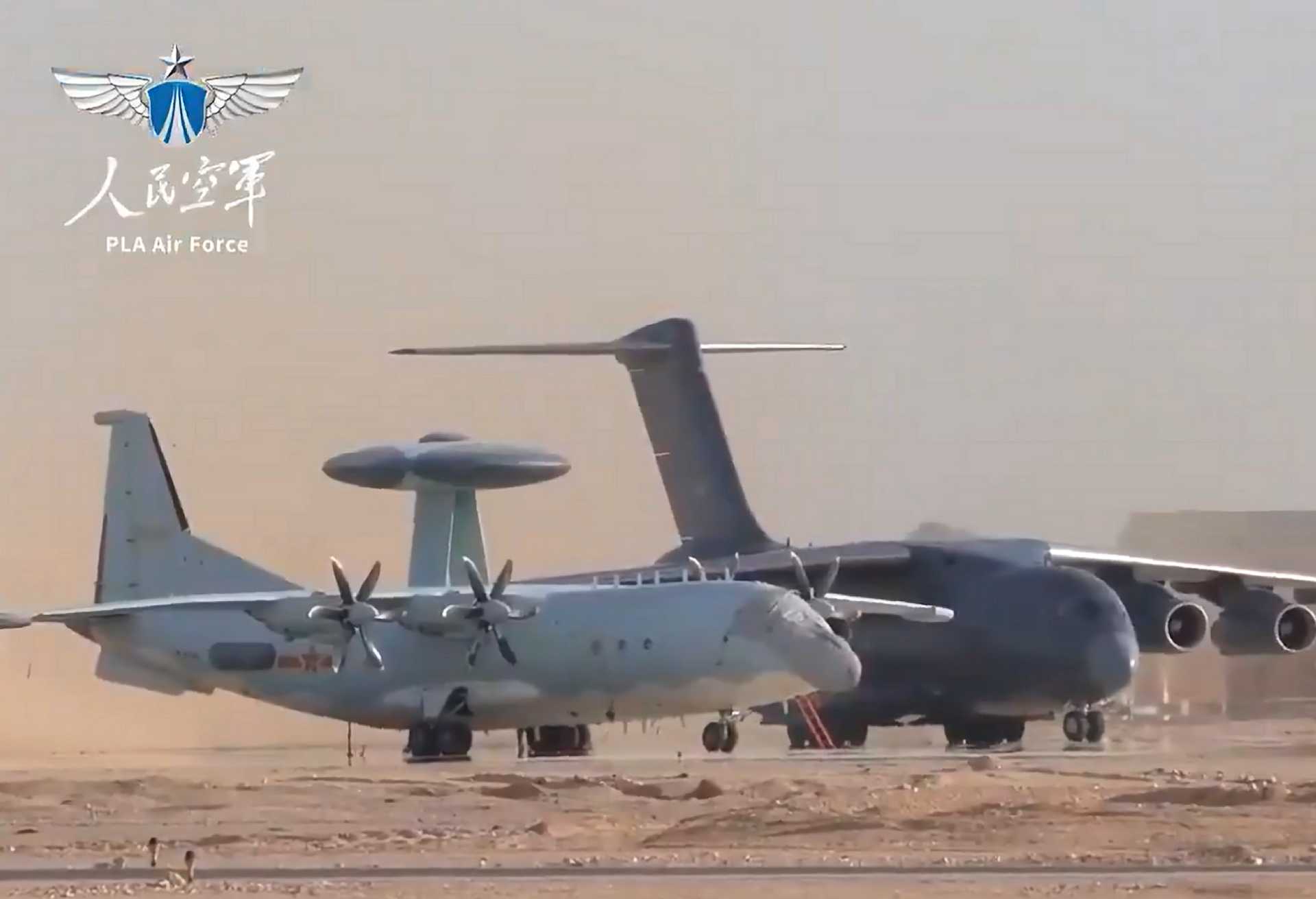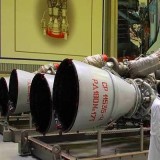Exclusive: China Deploys KJ-500 Modern Surveillance Aircraft for First Time in Joint Air Drill with Egypt

{loadposition bannertop}
{loadposition sidebarpub}
The Chinese People’s Liberation Army Air Force (PLAAF) has deployed its KJ-500 Airborne Early Warning and Control (AEW&C) aircraft to Egypt for the “Eagles of Civilization 2025” joint air exercise with the Egyptian Air Force (EAF). This is the first time the KJ-500 has participated in an international military exercise, marking a new step in China’s overseas air operations. The exercise also marks the first bilateral air force drill between China and Egypt, aimed at enhancing coordination and operational understanding between the two countries.Follow Army Recognition on Google News at this link
China’s KJ-500 early warning aircraft on static display at an Egyptian air base, marking its first overseas deployment. (Picture source: China Air Force)
The KJ-500 is one of the PLAAF’s (Chinese People’s Liberation Army Air Force) most advanced airborne early warning platforms, developed by the Xi’an Aircraft Industrial Corporation and equipped with a modern phased-array radar system. It is based on the Y-9 medium transport aircraft and features a fixed dorsal radar dome that provides full 360-degree coverage. This radar system allows it to detect and track multiple airborne and surface targets at extended ranges, while also coordinating friendly aircraft during complex operations. The KJ-500 plays a central role in modern network-centric warfare, acting as a flying command and control node that can relay information across an integrated battle space.
Operationally, the aircraft can support up to ten onboard mission crew members, managing surveillance, identification, and command tasks simultaneously. It significantly boosts situational awareness, providing real-time intelligence to commanders and improving the coordination of air defense and offensive operations. With its electronic warfare systems, data-link capabilities, and command architecture, the KJ-500 enhances the ability of friendly forces to conduct joint operations across vast areas.
This first overseas deployment of the KJ-500 is particularly important because it signals China’s willingness to extend the operational reach of its high-value platforms and showcases the PLAAF’s increased readiness to conduct international missions alongside foreign partners. It reflects the growing maturity of China’s AEW&C fleet and the confidence Beijing has in its strategic aviation assets. Prior to this, Chinese AEW&C aircraft had only participated in exercises or missions within Asia or close to the Chinese mainland. By sending the KJ-500 to Egypt, China is affirming its capability to project power and support complex military operations far from home.
The aircraft’s journey to Egypt included a stop at Minhad Air Base in the United Arab Emirates before reaching Beni Suef Air Base in Egypt around April 13–14. The deployment was part of a larger Chinese contingent that included J-10C and J-10S fighter jets, YU-20 aerial refueling tankers, and support helicopters.
The “Eagles of Civilization 2025” exercise, taking place from mid-April to early May, is designed to enhance joint operational readiness and promote tactical coordination between the Egyptian Air Force (EAF) and the PLAAF. The exercise includes a range of activities such as air combat mission planning, joint flight operations, theoretical briefings, and practical air maneuvers. These drills aim to develop unified combat doctrines and deepen mutual understanding between the two air forces.
On the Egyptian side, MiG-29 fighter jets are participating, enabling both nations to test their platforms’ interoperability in joint sorties and coordinated missions. The involvement of the YU-20 tanker and KJ-500 AEW&C also allows the PLAAF to rehearse long-range, networked operations—skills that are essential for any modern air force seeking a global presence.
Beyond the tactical training objectives, the exercise reflects an evolution in defense relations between China and Egypt. Over recent years, Cairo has diversified its strategic partnerships, increasingly turning to China not only for defense equipment but also for joint training and military exchanges. China has become an important supplier of defense technology to Egypt, providing systems such as Wing Loong UAVs and precision-guided munitions. This cooperation is part of a broader strategic framework that includes economic, diplomatic, and military dimensions.
This joint drill signals a shift in Egypt’s foreign defense policy posture and underscores the growing appeal of Chinese military technology in global markets. For China, it also marks an important soft-power victory, as the successful overseas operation of a flagship platform like the KJ-500 enhances its image as a provider of advanced and reliable military solutions.
The “Eagles of Civilization 2025” drill symbolizes a new chapter in China-Egypt defense relations and reinforces China’s ambitions to become a global military partner. It also marks a subtle shift in the strategic dynamics of the Middle East, traditionally dominated by Western and Russian influence, as regional actors seek more diversified and autonomous security arrangements.
This landmark event cements the strategic cooperation between Beijing and Cairo and underscores how China is leveraging joint military exercises to deepen bilateral relations and extend its global military reach.

{loadposition bannertop}
{loadposition sidebarpub}
The Chinese People’s Liberation Army Air Force (PLAAF) has deployed its KJ-500 Airborne Early Warning and Control (AEW&C) aircraft to Egypt for the “Eagles of Civilization 2025” joint air exercise with the Egyptian Air Force (EAF). This is the first time the KJ-500 has participated in an international military exercise, marking a new step in China’s overseas air operations. The exercise also marks the first bilateral air force drill between China and Egypt, aimed at enhancing coordination and operational understanding between the two countries.
Follow Army Recognition on Google News at this link
China’s KJ-500 early warning aircraft on static display at an Egyptian air base, marking its first overseas deployment. (Picture source: China Air Force)
The KJ-500 is one of the PLAAF’s (Chinese People’s Liberation Army Air Force) most advanced airborne early warning platforms, developed by the Xi’an Aircraft Industrial Corporation and equipped with a modern phased-array radar system. It is based on the Y-9 medium transport aircraft and features a fixed dorsal radar dome that provides full 360-degree coverage. This radar system allows it to detect and track multiple airborne and surface targets at extended ranges, while also coordinating friendly aircraft during complex operations. The KJ-500 plays a central role in modern network-centric warfare, acting as a flying command and control node that can relay information across an integrated battle space.
Operationally, the aircraft can support up to ten onboard mission crew members, managing surveillance, identification, and command tasks simultaneously. It significantly boosts situational awareness, providing real-time intelligence to commanders and improving the coordination of air defense and offensive operations. With its electronic warfare systems, data-link capabilities, and command architecture, the KJ-500 enhances the ability of friendly forces to conduct joint operations across vast areas.
This first overseas deployment of the KJ-500 is particularly important because it signals China’s willingness to extend the operational reach of its high-value platforms and showcases the PLAAF’s increased readiness to conduct international missions alongside foreign partners. It reflects the growing maturity of China’s AEW&C fleet and the confidence Beijing has in its strategic aviation assets. Prior to this, Chinese AEW&C aircraft had only participated in exercises or missions within Asia or close to the Chinese mainland. By sending the KJ-500 to Egypt, China is affirming its capability to project power and support complex military operations far from home.
The aircraft’s journey to Egypt included a stop at Minhad Air Base in the United Arab Emirates before reaching Beni Suef Air Base in Egypt around April 13–14. The deployment was part of a larger Chinese contingent that included J-10C and J-10S fighter jets, YU-20 aerial refueling tankers, and support helicopters.
The “Eagles of Civilization 2025” exercise, taking place from mid-April to early May, is designed to enhance joint operational readiness and promote tactical coordination between the Egyptian Air Force (EAF) and the PLAAF. The exercise includes a range of activities such as air combat mission planning, joint flight operations, theoretical briefings, and practical air maneuvers. These drills aim to develop unified combat doctrines and deepen mutual understanding between the two air forces.
On the Egyptian side, MiG-29 fighter jets are participating, enabling both nations to test their platforms’ interoperability in joint sorties and coordinated missions. The involvement of the YU-20 tanker and KJ-500 AEW&C also allows the PLAAF to rehearse long-range, networked operations—skills that are essential for any modern air force seeking a global presence.
Beyond the tactical training objectives, the exercise reflects an evolution in defense relations between China and Egypt. Over recent years, Cairo has diversified its strategic partnerships, increasingly turning to China not only for defense equipment but also for joint training and military exchanges. China has become an important supplier of defense technology to Egypt, providing systems such as Wing Loong UAVs and precision-guided munitions. This cooperation is part of a broader strategic framework that includes economic, diplomatic, and military dimensions.
This joint drill signals a shift in Egypt’s foreign defense policy posture and underscores the growing appeal of Chinese military technology in global markets. For China, it also marks an important soft-power victory, as the successful overseas operation of a flagship platform like the KJ-500 enhances its image as a provider of advanced and reliable military solutions.
The “Eagles of Civilization 2025” drill symbolizes a new chapter in China-Egypt defense relations and reinforces China’s ambitions to become a global military partner. It also marks a subtle shift in the strategic dynamics of the Middle East, traditionally dominated by Western and Russian influence, as regional actors seek more diversified and autonomous security arrangements.
This landmark event cements the strategic cooperation between Beijing and Cairo and underscores how China is leveraging joint military exercises to deepen bilateral relations and extend its global military reach.





